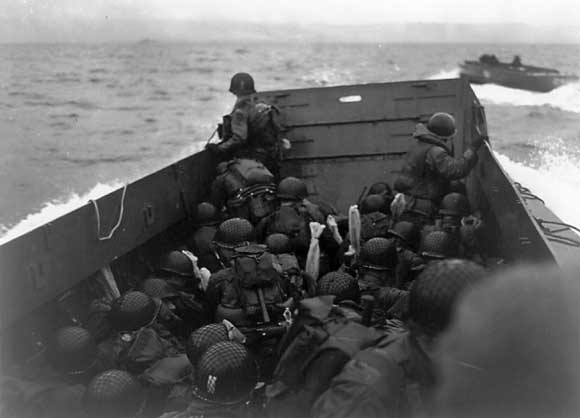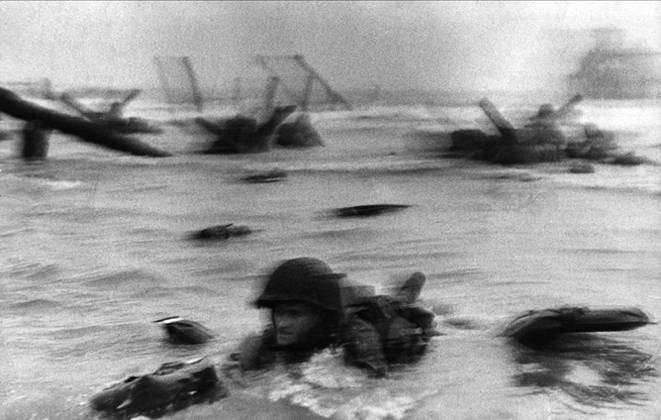
This picture has an aura and authority that may become harder and harder to
appreciate. It was taken by Robert Capa, who went into Omaha Beach
with the first wave on D-Day, 6 June 1944. Omaha Beach was, as it turned
out, the most hellish sector of the invasion, where the most casualties
occurred. Even before that became known, Capa would certainly
have been aware that he was risking his life to record the moment on
film, that there was a good chance he’d never return from France, even
if he managed to get ashore there. But he knew how important the
invasion was — what a visual record of it would mean to everyone
praying for its success, and to future generations.
In modern warfare, there would probably be video cameras attached to
the landing craft, capable of transmitting live images to a command
center somewhere, but in Capa’s time a real live human being needed to
be there with a camera to bring back pictures of the assault. A
life had to be put on the line for it.
Capa could assume, too, that his pictures would have a built-in
authority as proof of his witness. Today, in the era of
Photoshop, when photographs can be faked almost beyond detection, the
photographic medium has lost some of this authority. We have to
think retrospectively to summon up what the image above and the one below meant to Capa and his contemporaries.

There was a tragic but somehow fitting end to Capa’s experiences at
Omaha Beach. He survived but most of the photographs he took did
not. A nervous lab assistant back in England tried to dry Capa’s
rolls of 35mm film too quickly — and all but eleven of the images were
destroyed. But this just served to make those eleven images more
precious — to remind us of all that was lost on D-Day, all the lives
of young American soldiers that ended on the invasion beaches.
The eleven images that do survive are miraculous things. It’s
like having photographs of the last day at Thermopylae, of the battle
on Bunker Hill, of the furthest advance of Pickett’s charge. The visual
records of future wars will be more extensive and more useful to
military planners, but they won’t have quite the human dimension, the
spiritual dimension, of Capa’s pictures. They may make us shudder but they won’t make us cry — as Capa’s do, or should.
